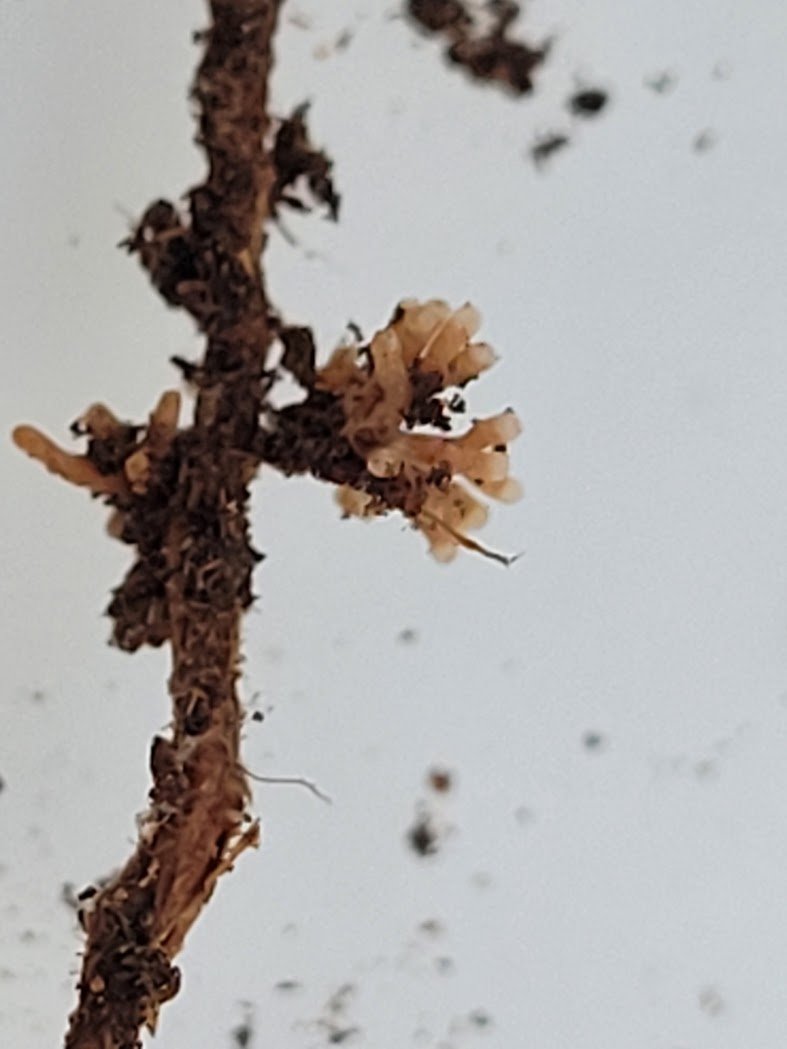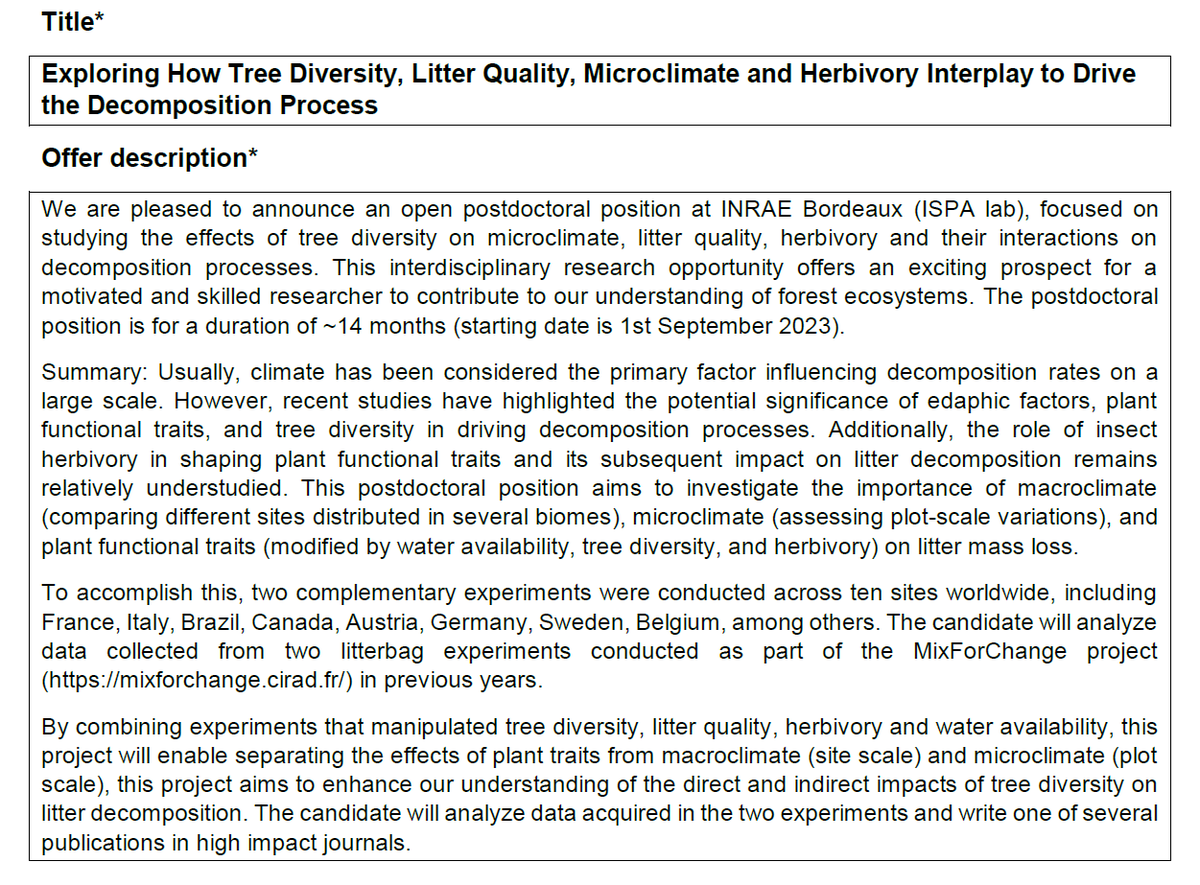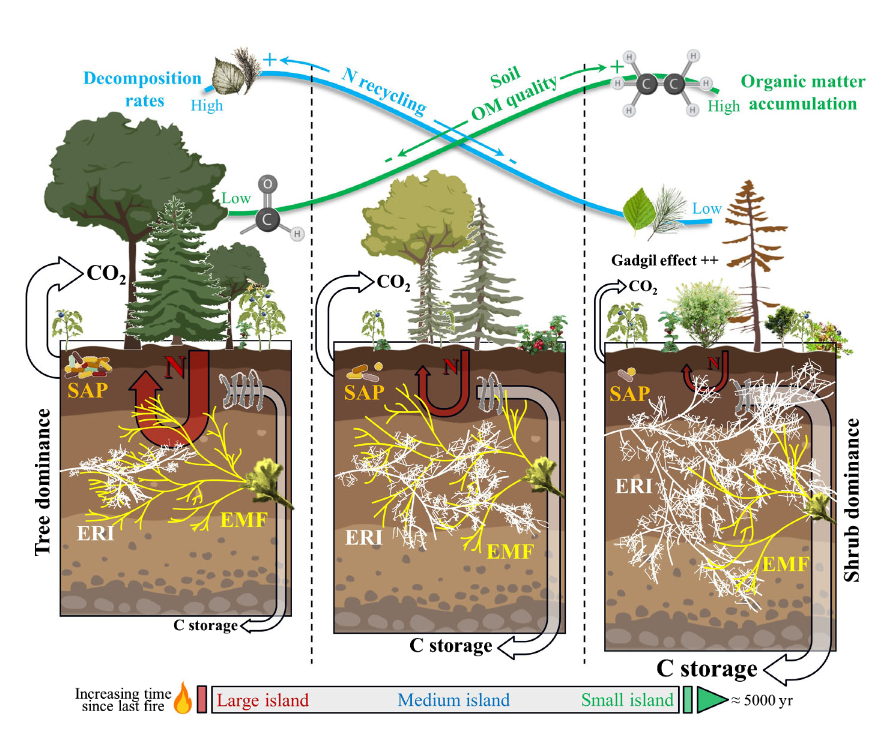
Nicolas Fanin
@nicolasfanin
Followers
749
Following
2K
Media
274
Statuses
2K
Food lover and passionate ecologist (INRAE) - Microbial Ecology - Soil Biogeochemistry - Ecosystem Functioning
Bordeaux
Joined June 2010
RT @t_camenzind: You can now find our study presenting refined conversion factors for soil fungal biomarkers online - open access https://t….
link.springer.com
Soil Ecology Letters - The abundances of fungi and bacteria in soil are used as simple predictors for carbon dynamics, and represent widely available microbial traits. Soil biomarkers serve as...
0
16
0
RT @JEcology: 🌲Root traits variation within a #pine #species significantly influences #rhizosphere microbial communities.@lindunmei @nicola….
besjournals.onlinelibrary.wiley.com
This study found that intraspecific variation in plant roots significantly influence rhizosphere microbial communities, which in turn can influence plant nutrition and therefore plant performance...
0
10
0
RT @sMarten_Winter: Examples of Excellence @idiv.iDiv prizes 2023 2/x. ➡️.Florian Schnabel @MixedForests get the iDiv PhD prize for his gre….
0
2
0
Only two more weeks to apply. Feel free to contact me if you need more information.
Post-doc position at @INRAE_NA_BDX bordeaux. Data analysis about tree diversity and litter decomposition in the @MixForChangeTDN (~14 months). Feel free to send me an email for more information.
0
5
5
Post-doc position at @INRAE_NA_BDX bordeaux. Data analysis about tree diversity and litter decomposition in the @MixForChangeTDN (~14 months). Feel free to send me an email for more information.
1
14
22
RT @AkiraSMori: It's a pleasure to share our new paper on the relationship between biodiversity and ecosystem multifunctionality. We intro….
esajournals.onlinelibrary.wiley.com
Biodiversity changes, such as decline in species richness and biotic homogenization, can have grave consequences for ecosystem functionality. Careful investigation of biodiversity–ecosystem multifu...
0
24
0
RT @inrae_save: With Gaëtane Le Provost, we have set up a #BugNet site @INRAE_UEVB @inrae_save to assess the impact of invertebrate herbivo….
0
5
0
RT @tania_maxwell7: Read the open-access short communication paper here: . Many thanks to my coauthors Laurent Augu….
bsssjournals.onlinelibrary.wiley.com
Soil organic nitrogen (N) cycling processes constitute a bottleneck of soil N cycling, yet little is known about how tree species composition may influence these rates, and even less under changes...
0
2
0
RT @PeteEcology: ‘Landscape management strategies for.multifunctionality and social equity’ by @margot_neyret et al in @naturesustainab sho….
0
52
0
RT @annekempel: Juhui - I will get my first phd student! So happy that my project on climate change impacts on plant-consumer interactions….
0
14
0
RT @GPR_BPS: 🚨 Job Alert 💼 . Post-doc position @univbordeaux:.Investigating macro-evolutionary metabolic innovations linked with shifts in….
0
7
0
RT @LisaWingateBdx: Hey everyone I would be grateful if you could spread the word amongst your tweeps we have some nice positions open to w….
0
41
0
RT @NewPhyt: Recent #PlantScience accepted in New Phyt. 🌱 @nicolasfanin et al. Ericoid shrubs and their effects on fungal communities https….
0
2
0
One of the most interesting paper I've read recently. There are many uncertainties about how to build a ratio based on PLFA data. There are many excellent points raised and we should take some cautions about the generalization of broad indicators.
link.springer.com
Biology and Fertility of Soils - The current opinion and position paper highlights (1) correct assignation of indicator phospholipid fatty acids (PLFA), (2) specificity and recycling of PLFA in...
2
8
40







